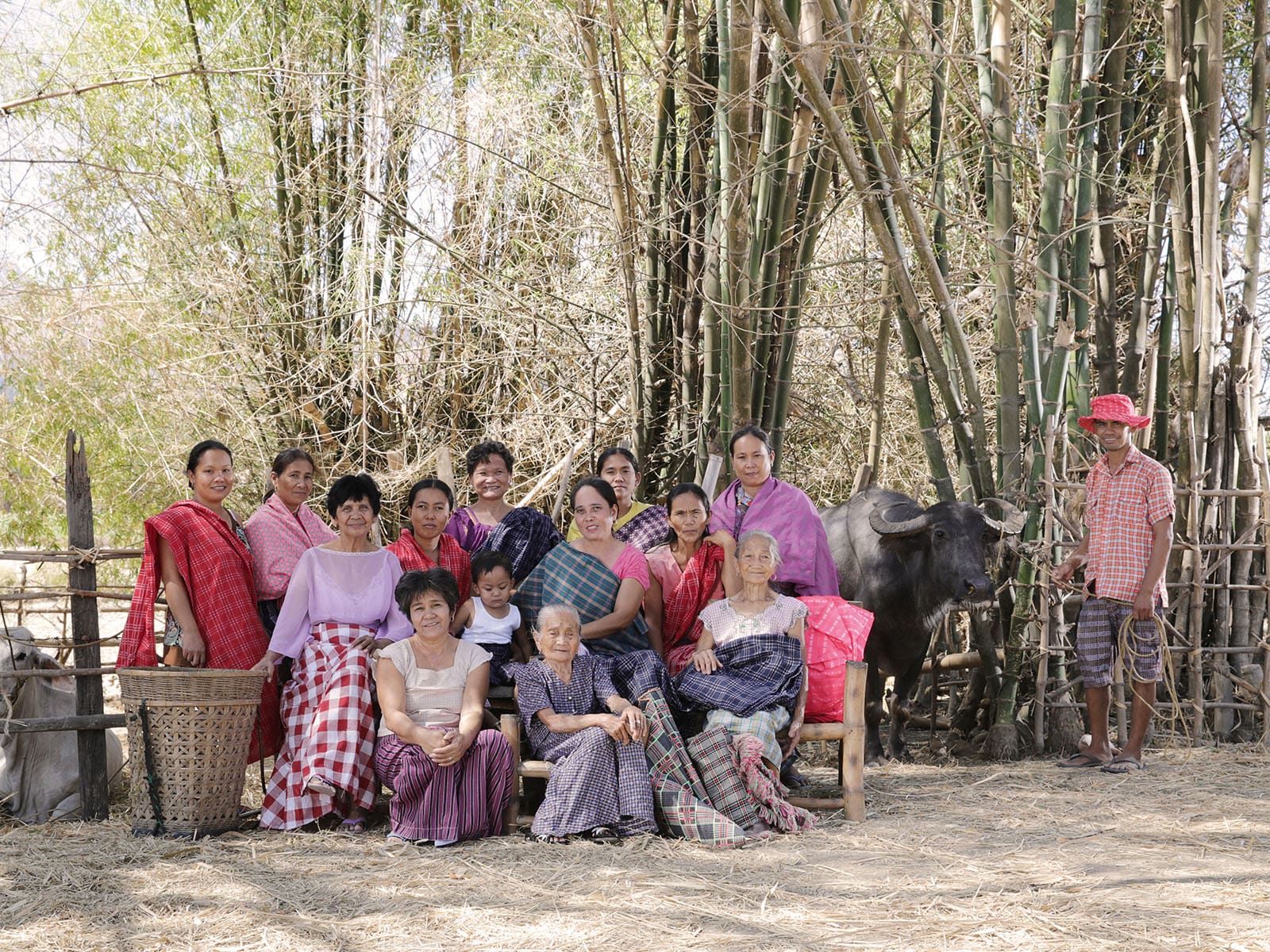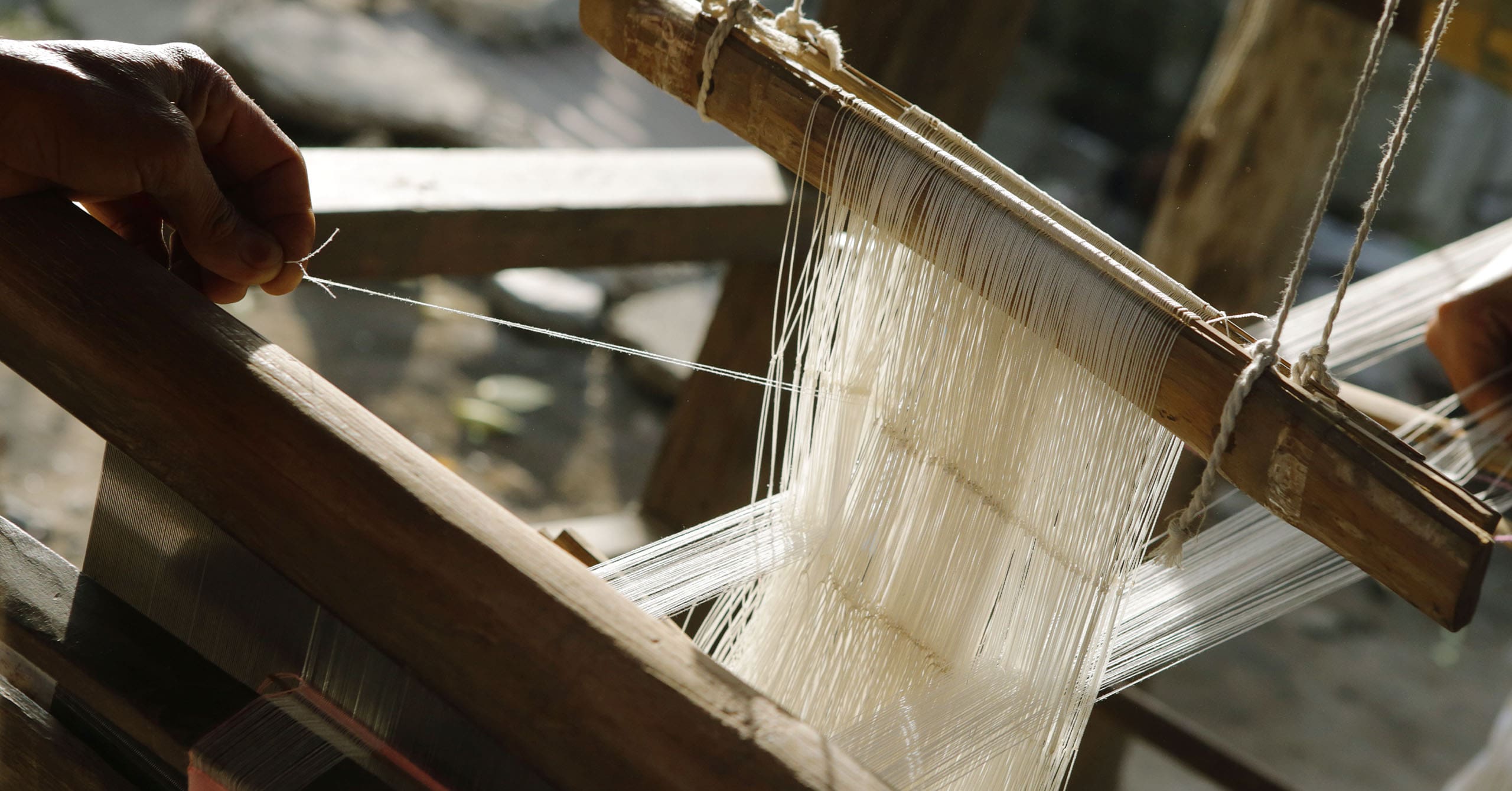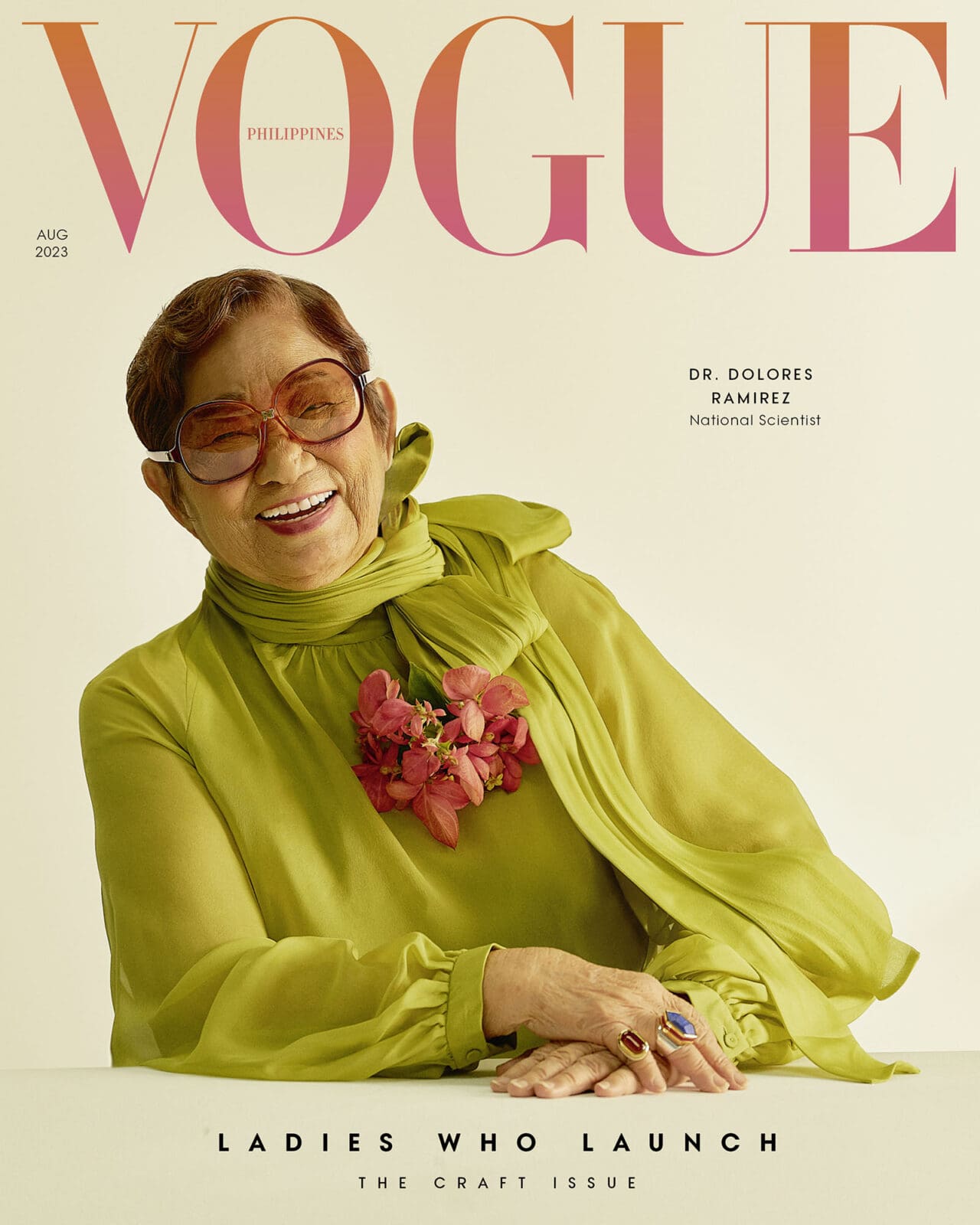A weaver setting up a traditional floor loom. Photos courtesy of the book INABEL: Philippine textile from the Ilocos region.
A weaver setting up a traditional floor loom. Photos courtesy of the book INABEL: Philippine textile from the Ilocos region.
How can craft survive and flourish for generations to come? It’s all about respect and knowledge.
Philippine fashion is years into a golden era, marked by nationalistic leanings as seen in the emergence of local weaves and Filipino motifs, both ancient and contemporary. The trend has created curiosity for our diverse historical manner of clothing and helped revitalize craft traditions. The groundwork had been laid decades before by those who saw the urgency to preserve our material heritage. These visionaries realized that Filipino traditional crafts need to be financially viable by being able to serve a market through an equitable exchange. They saw the importance of documenting and preserving craft’s histories so that present and future generations can have a deeper understanding of their cultural significance.
Designer Patis Tesoro was an early purveyor of cultural sustainability who, just after the EDSA Revolution, noticed the precarious situation of the piña cloth when she received a call from then Far Eastern University chairman Dr. Lourdes Montinola. “She told me, ‘do you know piña is dying?’” Tesoro recalls. “And I told her I know it’s dying because my mother-in-law, Tesoro’s co-founder Salud Tesoro, was buying piña fabrics and putting them in her walk-in safe. Kasi daw nawawala na, and piña’s the lifeline of the family business.” [“Because they said that it was disappearing, and piña’s the lifeline of the family business.”]
With the guidance of Dr. Montinola, Tesoro would put to motion her own plans of reviving the piña industry in Aklan, which exists to this day. The project’s success became the impetus for Tesoro’s next ambition, the “revival of Filipiniana through arts, crafts, culture and livelihood” through the Katutubong Filipino Foundation, which was launched in 1992 with the support of then First Lady Ming Ramos.
Palawan, on the other hand, does not have a textile weaving tradition, “because the different ethnolinguistic groups’ original clothing was made from bark,” explains Rambie Lim, whose family established the Rurungan sa Tubod Foundation to create livelihood for the province’s less-privileged women. “But my parents and aunts, who set up the foundation back in 1999, discovered that piña was grown abundantly. So we introduced textile weaving to the communities, which still produces fabrics up to now.” Lim and her family went a step further by branding their products under the Tepinya label, and Lim herself establishing an end-product lifestyle line called Crafted Filipinas within the foundation’s umbrella.
There is the practical side to preservation, in which industries or trades need to adapt to the present market scenario. But equally important is the scholarly side to the endeavor, wherein samples of traditional works are studied, documented and preserved for reference. Seeing the samples of exquisite Filipino clothing and fabrics and realizing their growing scarcity made Floy Quintos start collecting back in 2000. He was able to amass a substantial lot that included articles from the Cordilleras all the way to Mindanao.
“Each indigenous group had its own unique textile and craft tradition,” Quintos explains. He was also fascinated with the ritual and functions associated with the crafts and how it was horizontally integrated within the communities. “They gather and strip their own abaca, harvest and hand spin their own cotton, and the weavers are also the ones who know how to grind the roots to make the dyes, etc. The system is so cohesive and integrated that it really reflects a world view of the weaver, and also reflects an entire culture. And it reflects the ties to the natural world, which is very important.”
Quintos made his collection available to a wider public by lending to institutions like the Yuchengco Museum, Vargas Museum, and the National Museum. In 2018, he started to sell his collection in parts, before a full turnover in 2020 to Mercedes Zobel who in turn donated some lots to the Ayala Museum where they are now part of a permanent collection. During the COVID lockdown, Quintos helped with the layout for an indigenous textiles exhibition curated by Dr. Patricia Araneta and staged by Gino Gonzales for the Ayala Museum, which opened to the public late last year.

“The textiles you see today are very different from the old ones, because weavers are weaving for the market,” Quintos says. “There’s nothing wrong with that, they have to survive. But if you see the ones that were woven for deep ritual and social significance, they are worlds apart.”
Today, there are active weaving and clothing-related craft centers in different parts of the country, such as the one in Kabangkalan, Negros Occidental, established by husband and wife sustainability advocates Mike and Banj Claparols who make use of pineapple fiber and cotton blends to make shoes under the Lakat label. Filip+Inna founder Len Cabili works with mostly handwoven textiles to create garments that are embellished with traditional embroidery and beadwork by different indigenous communities. Frenchman Francis Dravigny, who started exporting small batches of T’boli Ikat textiles to Europe back in 1993, is currently operating a weaving center in Cebu where he has 20 looms, and a raffia weaving center in Bohol, currently still recovering from the devastations of Typhoon Odette.
Just like everyone else involved in artisanal crafts, Dravigny saw the need to innovate in order to survive. He developed hybrid weaves using abaca as the base fiber, to which he added different natural materials from all over the country. “We have weaves that are exclusive to our French clients, which are used for the interiors of top fashion houses like Chanel, Louis Vuitton, and Guerlain.” More recently, designer Rajo Laurel used Dravigny’s fabric for a gown worn by award-winning actress Dolly de Leon to the 2023 BAFTAs ceremony, marking the entry of Dravigny’s company, Interlace Co., in the fashion world.
Al Valenciano, who has published the book INABEL: Philippine Textile from the Ilocos Region, had to rework his looms in order to satisfy clients from the world of fashion. “Apart from that, I had to make the fabrics finer by introducing finer threads and using designs historically made for clothes,” Valenciano explains. “My rule is wag gamiting damit ang kumot, kasi kulang na lang bigyan ko ng unan ang naglalakad na bed cover.” [“My rule is ‘don’t use blankets as clothes, because I might as well give a pillow to those walking around with a bed cover.”]
Patis Tesoro, for her part, recycles old gowns and dresses to make new ones, as a way of bringing old crafts to the next generation. “Someone said, how can we use piña when it’s so expensive. “True, but one can be more creative,” Tesoro says, before proceeding to explain how a small piña coaster with fine embroidery can be applied to a garment. “We need more creative people for crafts to survive,” she adds.
For Valenciano, it is just as important for the weavers to understand and accept the roles that they play in cultural preservation. “Every time I talk to my weavers, I always tell them to make the best weave and work with pride because what they are selling are not just weaves, they are selling their stories and their heritage. In my book I dedicated it to the weavers that they may continue weaving the vessels of our past and future memories.”
Quintos, on the other hand, sees the need to look back on the past from a critical perspective. “Most of the destruction of these indigenous cultures happened in the ’50s to the ’70s, with the land grabbing, mining, logging, militarization, and hamletting. Add to that religious fundamentalism. Everyone says it’s the Spanish, it’s the Americans. No, honey… it’s us, the lowland Catholic Filipinos. It’s we who have done so much disservice to our indigenous peoples. And we should be very aware of that. Which is why I keep on saying, learn about these people. Don’t just buy the product.”

